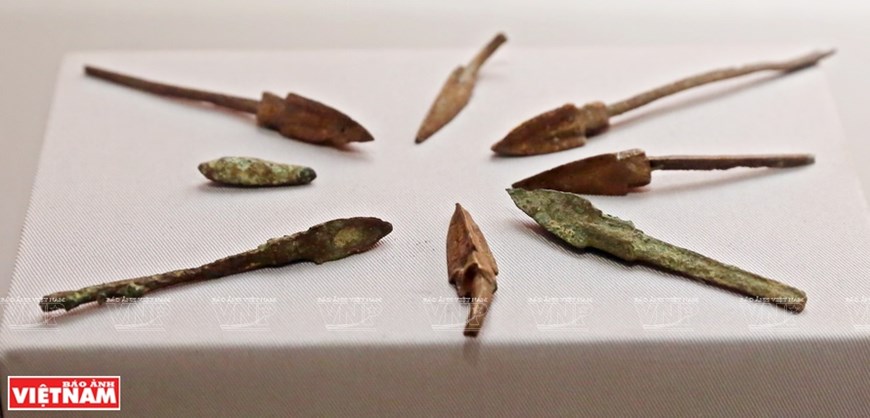-

Covering nearly 500ha, the citadel is a place of worship for King An Duong Vuong and Princess My Chau. In photo: The An Duong Vuong Temple was built in 1687 during the reign of King Le Hy Tong and was repaired in 1689, often called Thuong temple (Photo: VNA)
-

Trong Thuy – My Chau Well is located in front of An Duong Vuong Temple (Photo: VNA)
-

The main gate of An Duong Vuong temple retains almost all the ancient architectural features (Photo: VNA)
-

The ancient architectural features in the Co Loa Citadel relic site (Photo: VNA)
-

The statue of General Cao Lo, a good general under King Thuc Phan who created Lien Chau crossbow (a type of crossbow that fires multiple arrows at the same time) (Photo: VNA)
-

Dragon’s eyes consist of 2 small round wells, located on the sides of the main door outside An Duong Vuong temple (Photo: VNA)
-

My Chau princess’ worshipping place (Photo: VNA)
-

Visitors to Co Loa citadel (Photo: VNA)
-

Archaeologists have excavated many precious artifacts of the ancient Vietnamese people in Co Loa citadel relic site (Photo: VNA)
-

Decorative bricks made of terracotta material were found in Thuong temple, dating from the Le dynasty, 17th and 18th centuries (Photo: VNA)
-

White enamel, ceramic object excavated in Thuong temple, dating from the Tran dynasty (Photo: VNA)
-

Terracotta dragon-head shaped remain found in Thuong temple, dating from the Le Dynasty (Photo: VNA)
-

Lien Chau crossbow reconstruction model (Photo: VNA)
-

Bronze arrows, dating back 2,000-2,500 years ago (Photo: VNA)
-

Bronze plows, dating back 2,000-2,500 years ago (Photo: VNA)
Co Loa Citadel
Co Loa Citadel, about 20 km to the north of today’s Hanoi, is not only a lively evidence of the ancient Vietnamese people’s tradition in their struggle against invaders to defend the country, but also an ideal destination for tourists.



